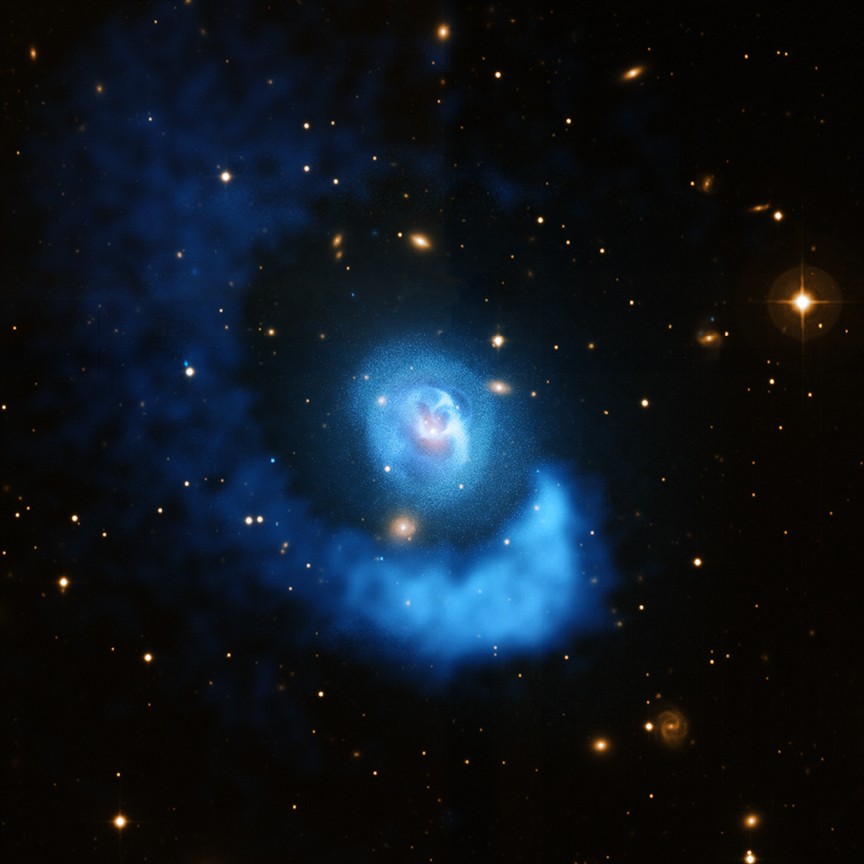Largest Galaxy in Universe Revealed [SLIDESHOW]
The largest galaxy cluster ever seen in the distant universe has been spotted by astronomers based in Chile.
The cluster, nicknamed "El Gordo" or the big one (in Spanish), has been located seven billion light years from the Earth by experts using Nasa's Chandra X-ray Observatory and the National Science Foundation-funded Atacama Cosmology Telescope (ACT). The cluster will be officially known as ACT-CL J0102-4915.
"This cluster is the most massive, the hottest, and gives off the most X-rays of any known cluster at this distance or beyond," Felipe Menanteau of Rutgers University in New Brunswick, NJ, who led the study, has said.
Galaxy clusters form through the merger of smaller groups or sub-clusters of galaxies and become the largest objects in the universe held together by gravity. The phenomenon involves dark matter and dark energy in the universe.
Experts believe that the process behind the formation of such gigantic clusters can be decoded in terms of the standard Big Bang model of cosmology which holds that the universe is composed predominantly of dark matter and dark energy. "Gigantic galaxy clusters like this are just what we were aiming to find. We want to see if we can understand how these extreme objects form using the best models of cosmology that are currently available," said Jack Hughes, a member of the experts' team which made the discovery. But scientists have insisted that a cluster of El Gordo's size and distance is extremely rare.
X-ray data generated by Chandra and the European Southern Observatory's Very Large Telescope in Chile showed that El Gordo is the location of two galaxy clusters colliding at several million miles per hour. This and some other similar features led experts to draw a comparison between El Gordo and another object called the Bullet Cluster, which is located almost four billion light years from the Earth.
"This is the first time we've found a system like the Bullet Cluster at such a large distance. It's like the expression says: if you want to understand where you're going, you have to know where you've been," said Cristobal Sifon of Pontificia Universidad de Catolica de Chile, Santiago.
The large distance from the Earth where it is located means El Gordo is being observed at a young age, experts said.






© Copyright IBTimes 2025. All rights reserved.





















